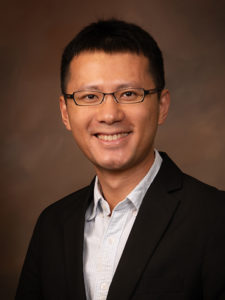
Timing analysis is the methodical examination of a digital circuit to determine if the timing constraints imposed by its components or interfaces are met and is a critical element in modern circuit design. Accurate and stable timing enables circuits to run efficiently, and without it, electronic devices would be unusable. Today’s circuits, however, are continually growing in complexity and will eventually exceed what existing timing analysis solutions can address. Finding new and efficient timing analysis solutions to large hardware designs is, therefore, a high research priority.
Electrical and computer engineering assistant professor Tsung-Wei Huang’s project, CAREER: HeteroTime: Accelerating Static Timing Analysis with Intelligent Heterogeneous Parallelism, will research several new computing techniques to accelerate timing analysis methods for circuit design.
“I am very excited to receive this award and see it as an important milestone in my career,” said Huang. “It will also support my lab and students in their scientific computing and allow for continued advancements in this area with different application domains.”
The five-year project will enable Huang’s lab to develop a novel timing analysis engine that leverages the power of new hardware and machine learning to advance performance. His team will research novel graphics processing unit algorithms and diverse task decomposition strategies to address critical challenges facing timing analysis. Their work will deliver ultra-fast analysis and optimization algorithms that can accelerate design turnaround time and improve the quality of results. The project will span a multidisciplinary research community with technical contributions, including electronic design automation, parallel computing, machine learning, and graph algorithms. Huang will collaborate with industry leaders like NVIDIA, Cadence, and Intel throughout the project to accelerate their innovations.
Findings from the project will be open-source to facilitate the transfer of technology and encourage researchers to contribute to design automation research and education. Collaboration with researchers and developers will allow for diverse new findings, ideas, educational resources, and technology.
The grant will enable Huang to hire new students to work in his lab. Students who work on the project will gain valuable career experience participating in hands-on research that directly aligns with the industry’s current needs. To find out more about this project and to apply for research opportunities, visit Huang’s lab.